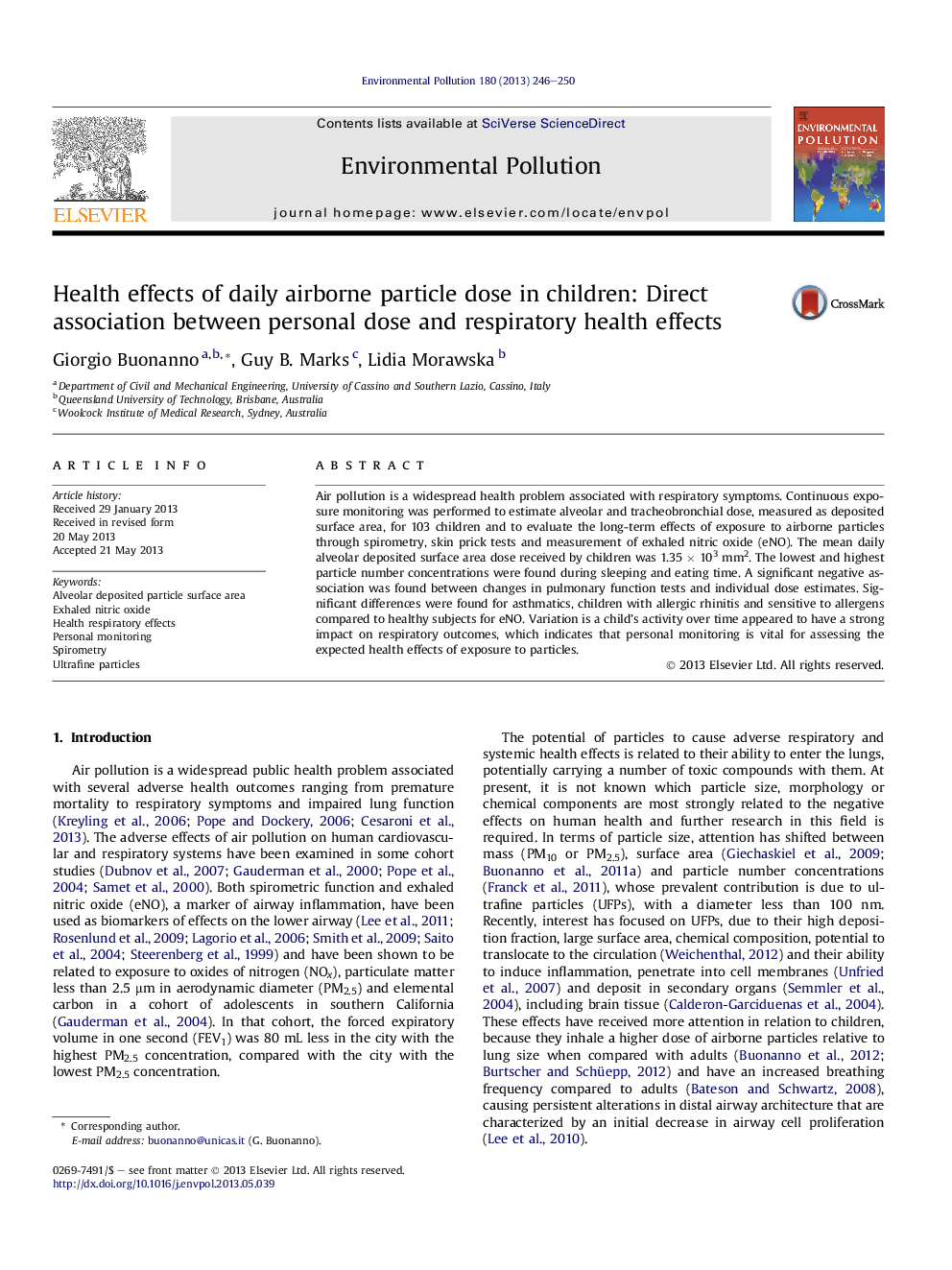| Article ID | Journal | Published Year | Pages | File Type |
|---|---|---|---|---|
| 6317745 | Environmental Pollution | 2013 | 5 Pages |
Abstract
Air pollution is a widespread health problem associated with respiratory symptoms. Continuous exposure monitoring was performed to estimate alveolar and tracheobronchial dose, measured as deposited surface area, for 103 children and to evaluate the long-term effects of exposure to airborne particles through spirometry, skin prick tests and measurement of exhaled nitric oxide (eNO). The mean daily alveolar deposited surface area dose received by children was 1.35Â ÃÂ 103Â mm2. The lowest and highest particle number concentrations were found during sleeping and eating time. A significant negative association was found between changes in pulmonary function tests and individual dose estimates. Significant differences were found for asthmatics, children with allergic rhinitis and sensitive to allergens compared to healthy subjects for eNO. Variation is a child's activity over time appeared to have a strong impact on respiratory outcomes, which indicates that personal monitoring is vital for assessing the expected health effects of exposure to particles.
Related Topics
Life Sciences
Environmental Science
Environmental Chemistry
Authors
Giorgio Buonanno, Guy B. Marks, Lidia Morawska,
